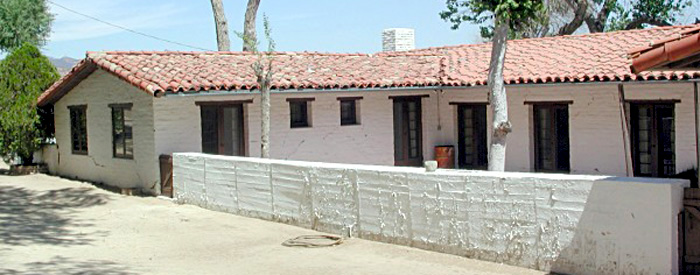The Los Angeles County Board of Supervisors will consider approving a Historic Preservation Ordinance on Tuesday that establishes procedures for designating and preserving historic properties throughout the county’s unincorporated area.
The proposed ordinance cleared the Landmarks Commission unanimously in September, and the Regional Planning Commission OK’d it on a 5-0 vote in October.
The purpose of the ordinance, according to a report from Planning Director Richard J. Bruckner, is to “enhance and preserve the distinctive historic, architectural and landscape characteristics which represent the county’s cultural, social, economic, political and architectural history” and to “foster community pride, stabilize property values, encourage and promote adaptive reuse (and) promote tourism.”
The ordinance would “specify criteria and procedures for the designation of landmarks and historic districts, and provide for their continued preservation.”
The proposed ordinance applies to “all privately owned real property located within the unincorporated territory of the county” except when a construction or demolition permit has already been issued prior to adoption of the ordinance.
The ordinance follows the state’s eligibility requirements. Generally, a property would be eligible for historic landmark status if it is more than 50 years old and meets one or more of the following criteria: Is associated with significant historical events; is associated with the lives of historically significant persons; embodies a distinctive architectural style or represents the work of an important designer; is likely to yield important historical information; is eligible for listing in the state or national register; is one of the largest or oldest trees in the county; or is a natural feature that is tied to an important person, event or place. Properties less than 50 years old can be eligible if they’re especially significant.
The Landmarks Commission would be responsible for implementing the ordinance.
Recommendations for listing would go from the planning director to the Landmarks Commission, which would review the nominations and either approve or deny them.
An accepted nomination would go to the Board of Supervisors for final approval.
If a property owner objects, the supervisors would hold a public hearing.
The ordinance also mirrors the state’s hardship allowances and leaves the final decision with the Landmarks Commission unless there is an appeal. The Regional Planning Commission reduced hardship application fees to $735 (from $4,059).
Property owners wishing to apply for landmark status on their own volition would pay $1,115 (instead of the earlier proposed $3,715).
In 2013 the supervisors approved a Mills Act program whereby the owners of historic properties in the unincorporated county area can apply for property tax reductions if they agree to maintain the historic character of their properties for at least 10 years. The supervisors authorized tax breaks of $300,000 annually (new approvals) for the first three years and a total rolling cap of $3 million in unrealized taxes.
Like this:
Like Loading...
Related





 Tweet This
Tweet This Facebook
Facebook Digg This
Digg This Bookmark
Bookmark Stumble
Stumble RSS
RSS




























REAL NAMES ONLY: All posters must use their real individual or business name. This applies equally to Twitter account holders who use a nickname.
1 Comment
None